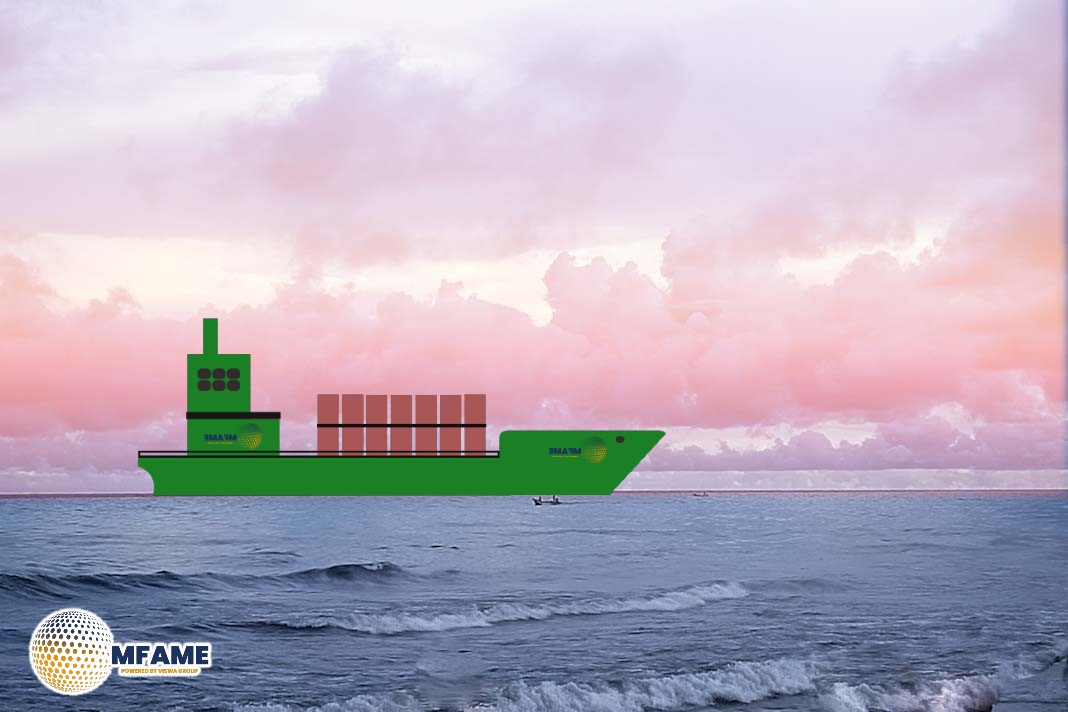The Freightos Baltic Index Global benchmark for shipping costs experienced a significant decline in March, dropping by 24% compared to the previous month to $2,094 per Forty-foot Equivalent Unit (FEU). This fall also pushed the index below its lowest point recorded in 2024 so far. Several factors contributed to this decrease, including a typical slowdown in demand following the Lunar New Year holidays, the ongoing adjustments as new carrier alliance services are implemented, and an overall increase in shipping capacity, reports Baltic Exchange.
Downward Pressure
In March, container shipping rates on the Asia-Mediterranean and Asia-Europe routes experienced significant month-on-month declines of 15% to 20%, settling at $3,250 per FEU and $2,565 per FEU, respectively. Notably, prices to Europe have fallen by 50% since the lead-up to the Lunar New Year. Despite ongoing disruptions caused by Red Sea diversions and congestion at various European ports, these rates are now 20% lower than their post-Lunar New Year lows observed in 2024.
The primary drivers for this stronger downward pressure compared to the previous year are likely increased competition and less effective capacity management resulting from the implementation of new carrier alliance services, particularly as these alliances are still in the process of establishing their new operational structures. Continued fleet growth is also a contributing factor.
In response to these falling rates, carriers are reducing capacity on routes to Europe and have announced General Rate Increases (GRIs) for April. However, there is some doubt within the industry regarding the success of these GRIs in reversing the downward trend, as similar attempts in March did not lead to a rate rebound. Given the expectation that Red Sea diversions will persist, there is a possibility of an earlier start to the peak shipping season on these lanes, potentially as early as May, as shippers adapt to longer transit times.
On the Transpacific routes, prices have also continued their post-Lunar New Year slide as demand has softened compared to the pre-holiday surge. By the end of March, rates to the US West Coast had fallen to approximately $2,200 per FEU, a 37% decrease compared to the previous month. US East Coast rates also saw a substantial decline, falling 26% month-on-month to $3,300 per FEU. On both Transpacific routes, prices are now down by 50% since the Lunar New Year.
Proactive Frontloading
Despite transpacific shipping volumes being considerably higher than the previous year, likely driven by proactive frontloading in anticipation of upcoming tariff implementations, freight rates on both US West Coast and East Coast routes are currently more than 20% below their lowest points recorded in 2024. This again underscores the significant influence of the ongoing carrier alliance restructuring and the continuous expansion of the global shipping fleet.
The Trump administration is expected to announce a series of trade barriers in early April. These measures are anticipated to include reciprocal tariffs targeting major trading partners, sector-specific tariffs, the reinstatement of a 25% tariff on goods from Canada and Mexico, and a potential substantial 60% tariff on exports from China.
Furthermore, a 25% tariff on all goods originating from any country that purchases oil from Venezuela is also scheduled to take effect in April. Consequently, many importers are actively investigating or increasingly relying on alternative sourcing locations outside of China, such as Vietnam and India, in anticipation of these reciprocal tariffs impacting various countries.
The United States Trade Representative (USTR) conducted a public hearing in late March regarding the proposed significant port call fees aimed at vessels built in China. During this hearing, a wide range of American stakeholders, including Beneficial Cargo Owners (BCOs), exporters, port labor unions, and ocean carriers, voiced their strong objections to the proposed rule, highlighting the substantial threats it would pose to their respective businesses.
Looking ahead, the frontloading of shipments observed in recent months is expected to subside. This decrease in activity could be triggered either by the actual implementation of the anticipated tariffs or by the accumulation of sufficient inventory levels. As a result, there is a possibility of a less robust transpacific peak shipping season in the coming months.
Did you subscribe to our daily Newsletter?
It’s Free Click here to Subscribe!
Source: Baltic Exchange























